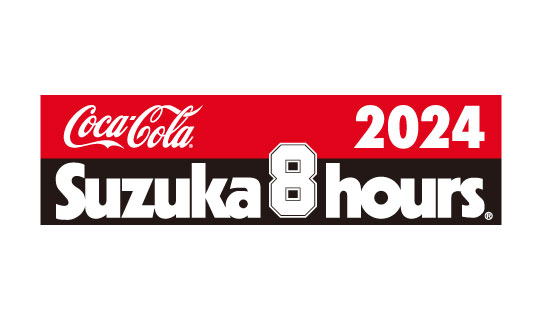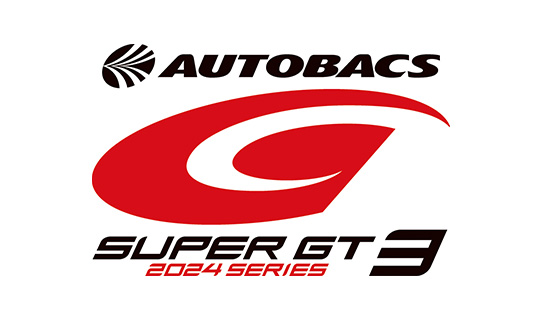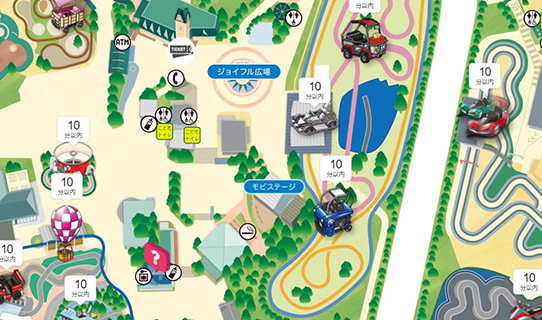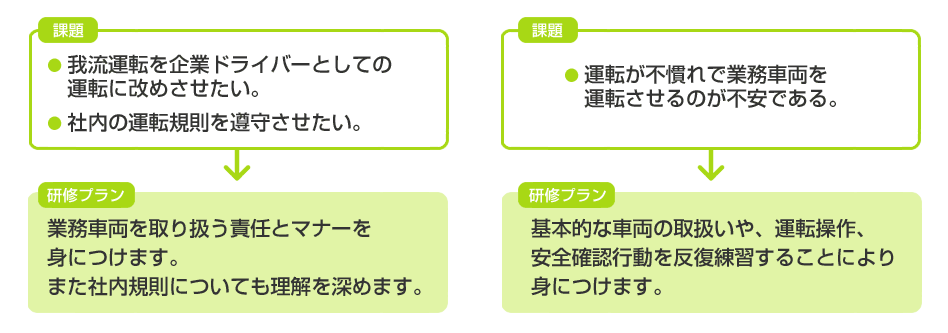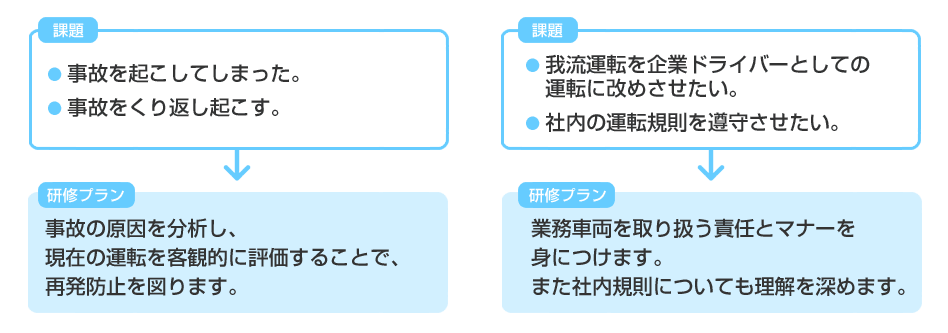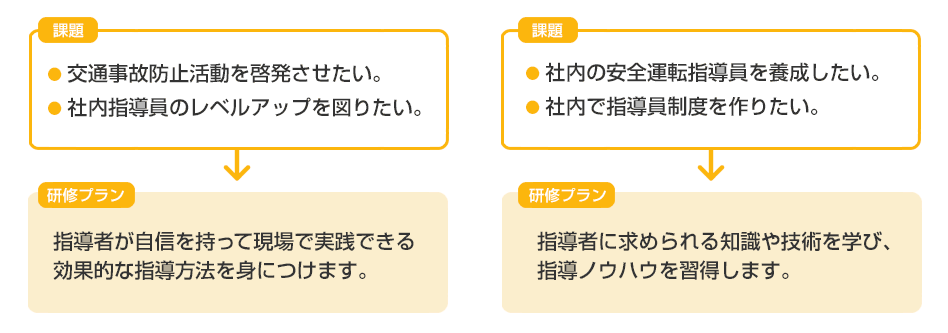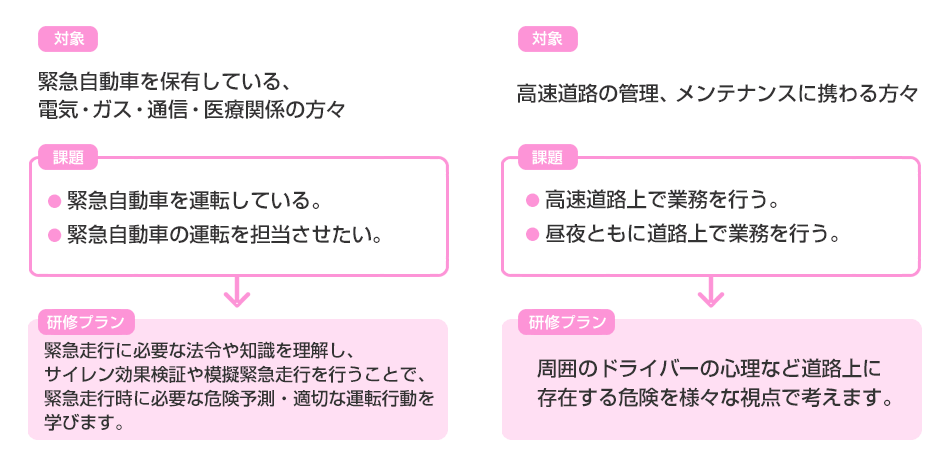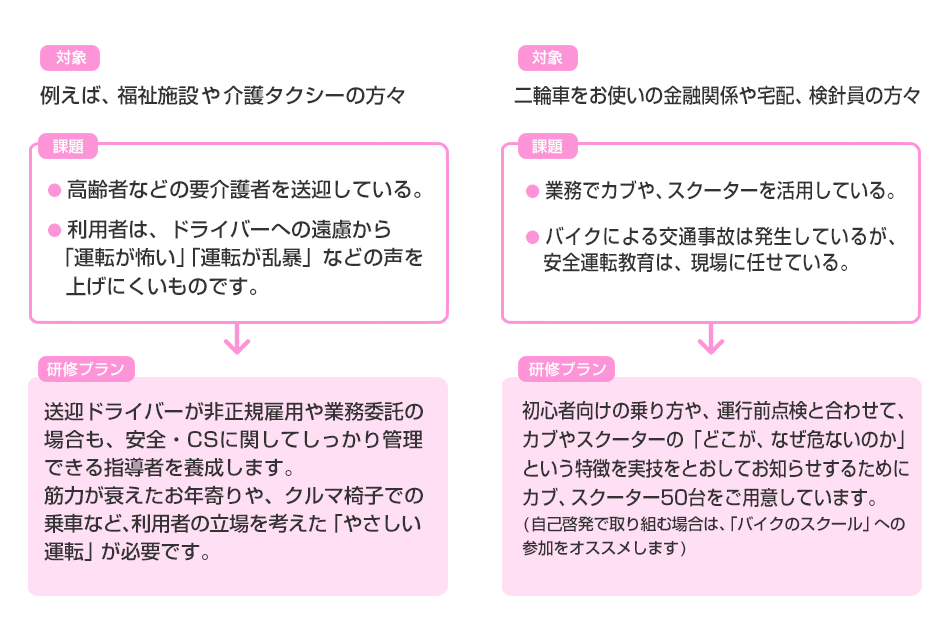Traffic Education Center TopSafety Driving Training for Companies and OrganizationsCustomized Plan
Training that takes time and cost is not the purpose of the event itself.
Our specialized staff will work with you to determine how to achieve the best results with limited resources. We will combine our accumulated experience and internal data, while conducting interviews, to create customized training programs for each company.

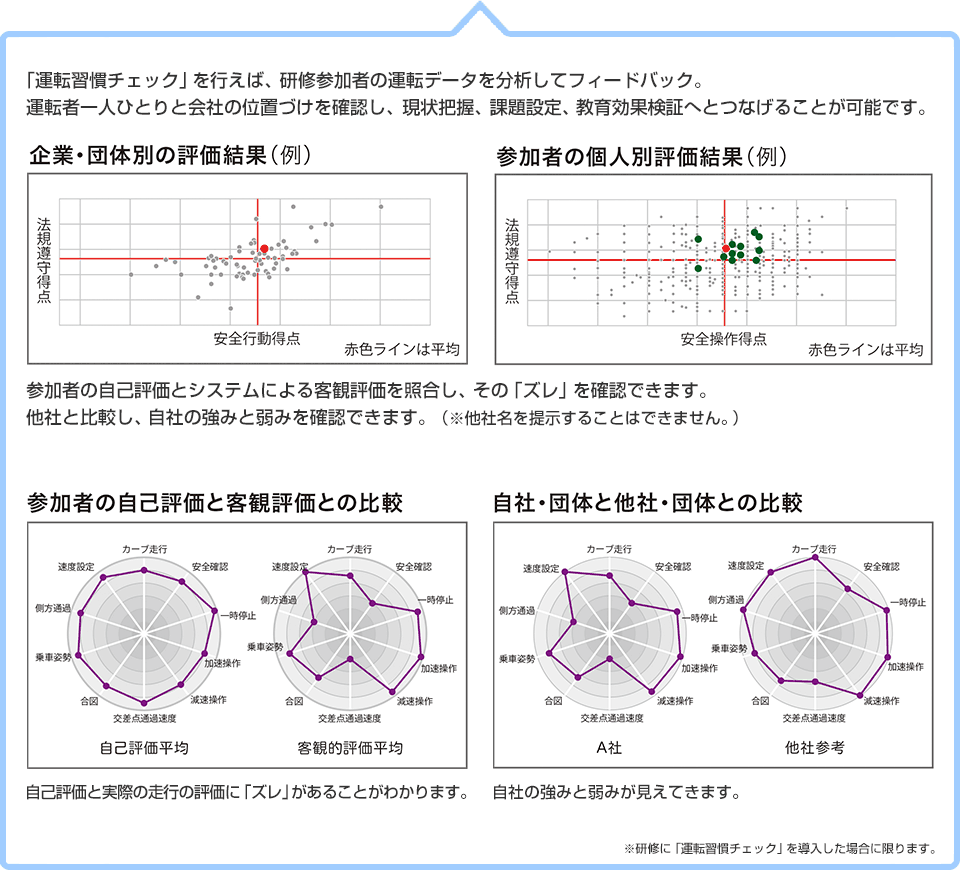
"Driving Habit Check Program" utilizing the unique driving evaluation system (HDSP※1) developed by Honda and Suzuka Circuit Traffic Education Center. ※1 HDSP: HONDA DRIVING STYLE PROPOSAL SYSTEM
Features of the Driving Evaluation System (HDSP)
- Compare data between "self-evaluation" by the driver themselves and "objective evaluation" by the evaluation system.
- Clarify the existence and magnitude of "perceptual differences" found from the comparison and overall analysis results.
- Concrete implementation of future challenges and necessary efforts, and possible effectiveness analysis.
-
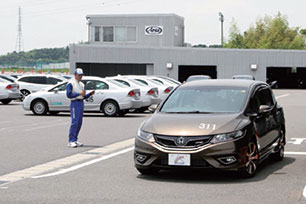
Driving Evaluation by System
-
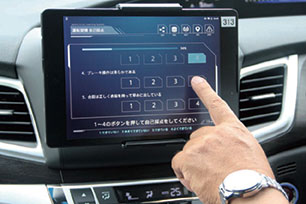
Self-Evaluation
-
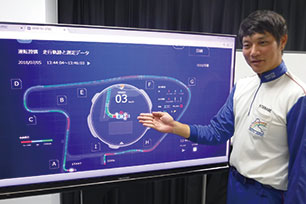
Evaluation Results Verification
Effect of "Driving Habit Check"
- Current Situation You can see the positioning of a single driver, as well as the positioning of the departments and offices they participated in.
- Task Setting You can clarify the level you aim for and connect it to education and environment creation towards that goal.
- Educational Effect Verification Regular measurements allow you to confirm your daily achievements and find new challenges.
-

The most common comments seen in traffic accident reports are "I was keeping a safe distance but still rear-ended the car in front of me.", "I was lost in thought and rear-ended the car in front of me.", and "I was rear-ended while stopped.".
For the parties involved, even a "sufficient following distance" is often unclear as a guideline.
In addition, you cannot give up on being aware of your surroundings or being rear-ended. Why, how, therefore, who, what, how, what to do. By thinking through the theory based on the data recorded in practical training, you will be able to derive useful specific numbers and actions. -

Many companies struggle with this issue. Some companies give up on repairing it every time, but small accidents can eventually lead to serious accidents that cannot be undone. Before that happens, each employee needs to have the mindset of not overlooking even small mistakes. Through practical training, they will learn about being attentive and considerate, as well as omitting actions. Not only will they learn about vehicle sense and driving in tight spaces, but they will also develop a safety mindset, such as knowing where to pay attention and what safe driving in tight spaces entails.
-

This is a very difficult case, but it cannot be overlooked as a company's social responsibility to continue driving even though it is understood to be "repeating".
In one-on-one training or small group training, it is necessary to objectively evaluate whether your driving is safe and find the causes and countermeasures by repeating them. Through training, diseases that lead to accidents may also be discovered.
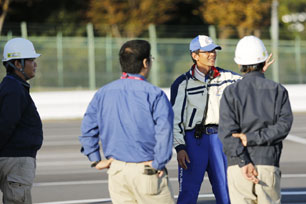
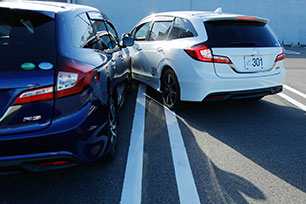
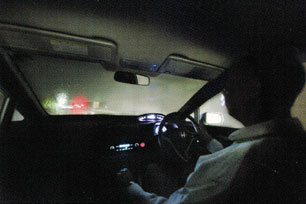 Night training using rain equipment
Night training using rain equipment
After completing the training, it was good, but in reality, there are times when we hear the story, "Somehow it returned to the original state." Even if the person becomes motivated, if the surroundings undermine that motivation, the time and cost invested in the training will be wasted. It is essential to create allies for the person in the field. Therefore, it is recommended to train leaders within the company, not just managers, but also senior members.
- Day 1
- 10:00Opening Ceremony
- 10:30Discussion(Things Companies' Drivers Should Be Aware Of)
- 11:00Driving Habit Check(Current Situation Check)
- 12:00Lunch
- 1:00 PMBasic Operations(Handling of Company Vehicles)
- 2:00 PMNarrow Road Driving (Handling in parking lots and narrow roads)
- 5:00 PMLecture (Traffic Hazard Prediction)
- 6:00 PMNight Verification7:30 PM
- Day 2
- 7:00Highway Driving
- 8:00Breakfast
- 9:00Vehicle Distance Verification (Emergency Braking and Steering Avoidance)
- 10:30Consciousness Check
- 12:30Lunch
- 1:30 PMDriving Habit Check (Training Effect Confirmation)
- 14:30Group Discussion
- 3:30 PMDeclaration of Determination
- 4:00 PMClosing Ceremony4:30 PM
Please contact us for schedule and vehicle usage.


